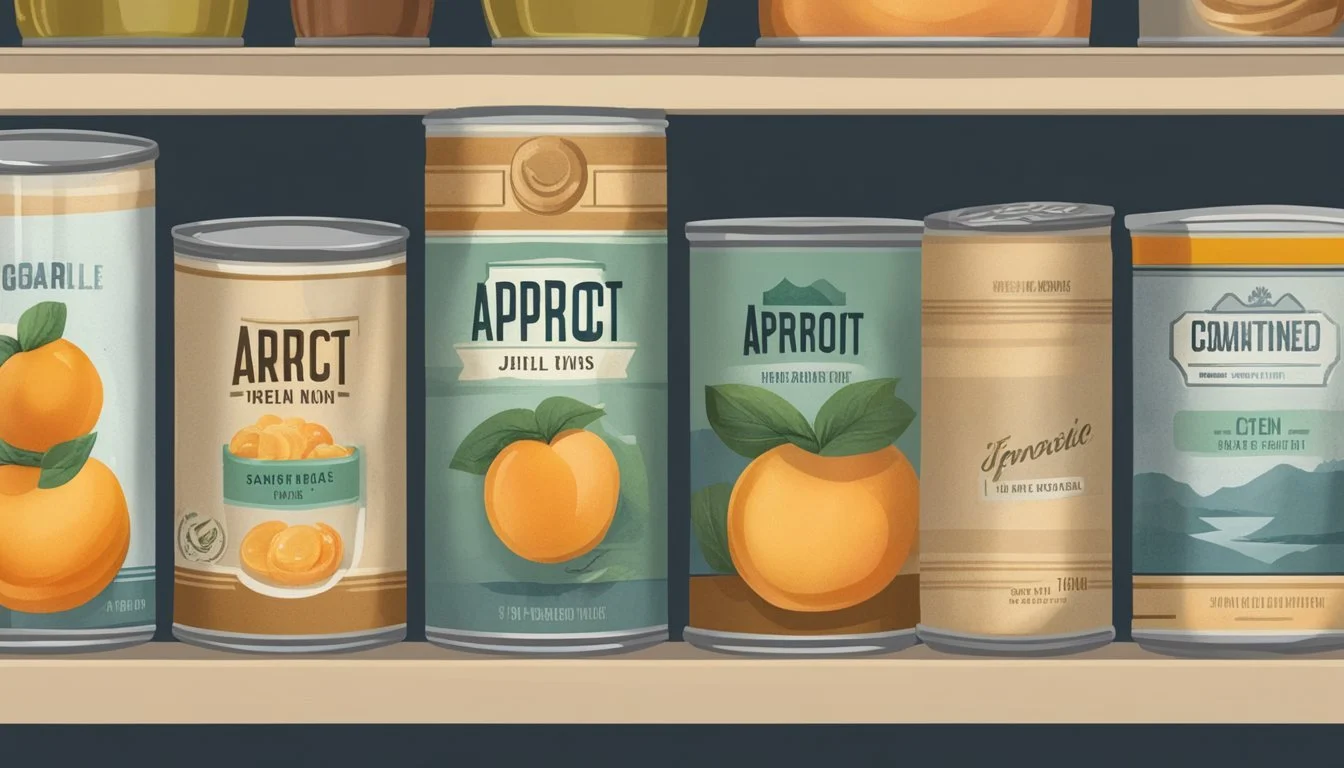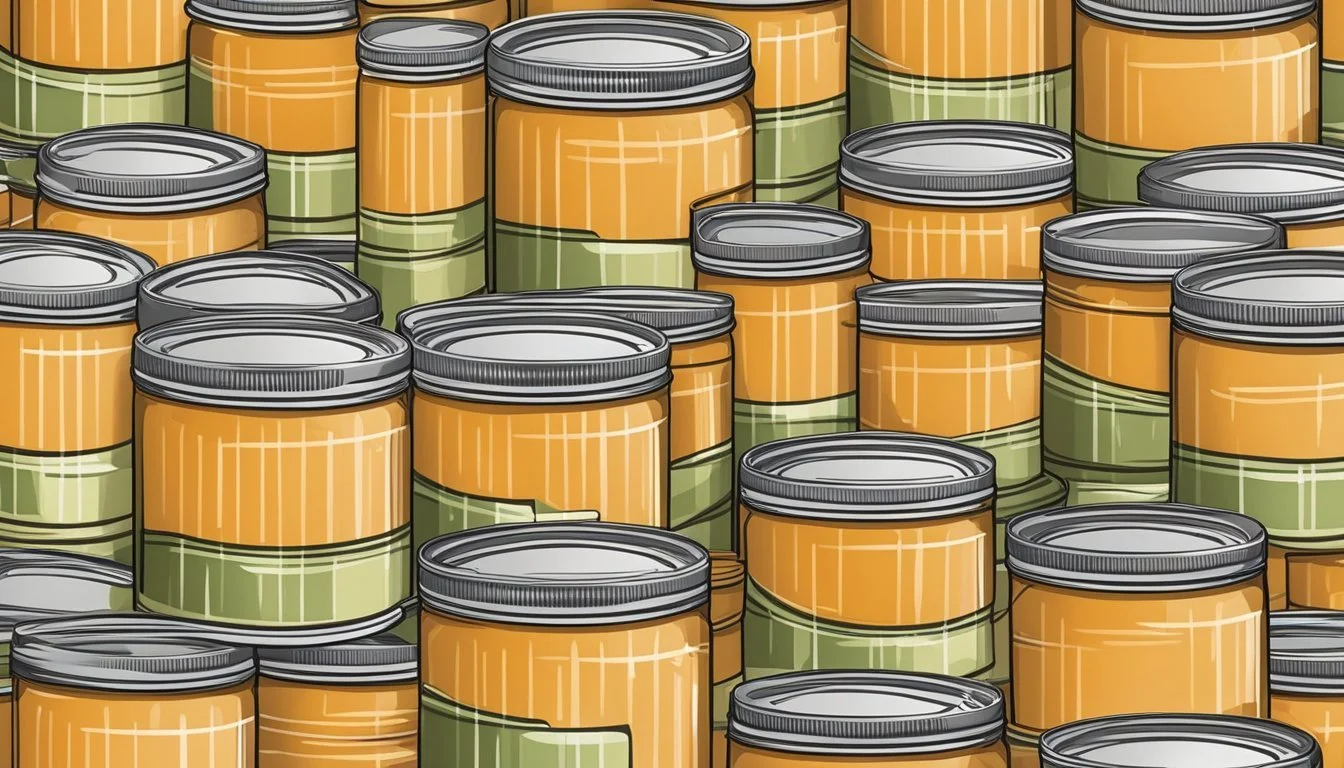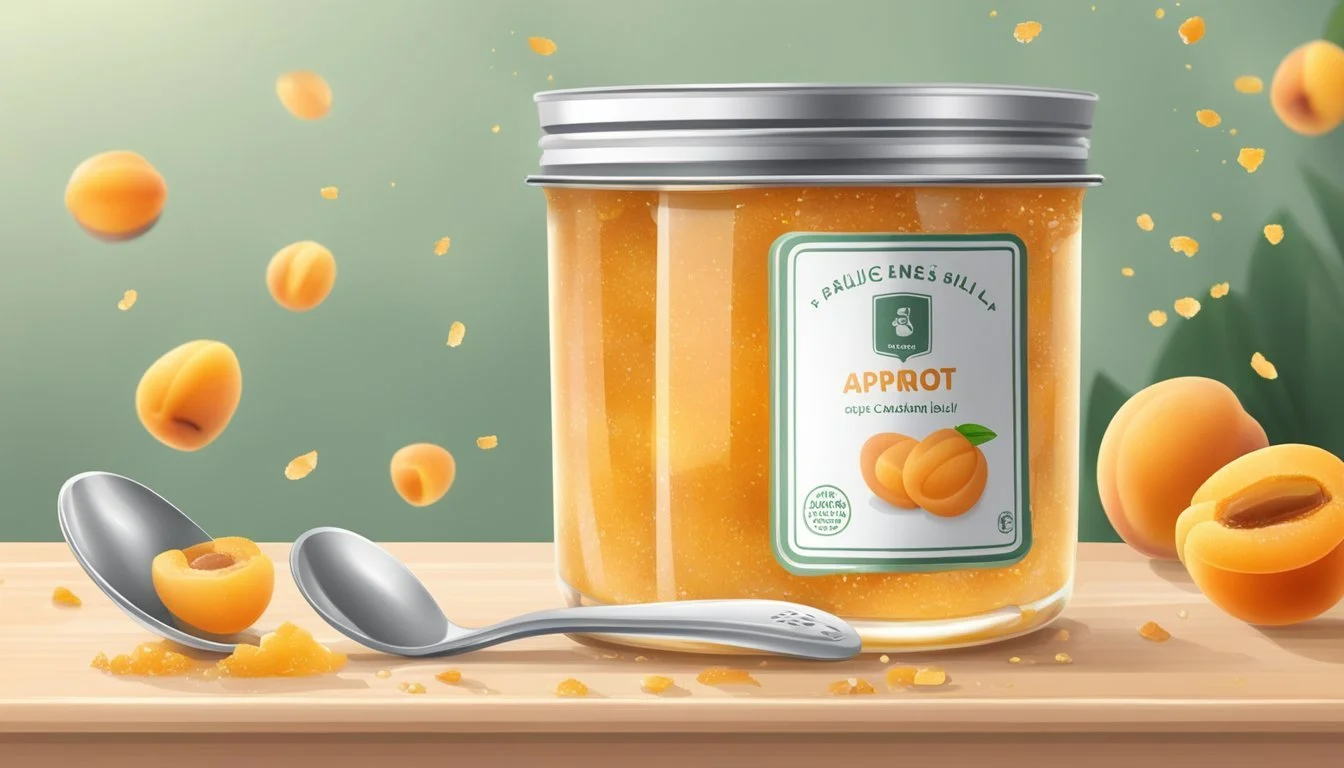Does Canned Apricot Jelly Go Bad?
Shelf Life and Storage Tips
Canned apricot jelly, like many preserved foods, doesn’t last forever. Properly canned and stored in a cool, dry place, an unopened jar of apricot jelly can maintain its best quality for about two years. Once opened, the jelly should be consumed within six months if kept refrigerated to ensure food safety and optimal taste.
Spoilage in canned apricot jelly can occur when the seal is compromised or the storage conditions are not ideal. Signs of spoilage include changes in color, odor, or texture, and the presence of mold. Always inspect the jar carefully before use to avoid any food safety issues.
For those concerned about maximizing the shelf life of their homemade or store-bought apricot jelly, paying attention to proper storage techniques is key. Storing unopened jars in a cool, dry area and keeping opened jars refrigerated will significantly reduce the risk of spoilage, ensuring your jelly stays safe and delicious for as long as possible.
Understanding Canned Apricot Jelly
Canned apricot jelly combines specific ingredients and a detailed canning process to create a flavorful, shelf-stable product. This section explores the composition and the steps involved in the canning process.
Composition of Canned Jelly
Apricot jelly is derived from fresh apricots, sugar, pectin, and lemon juice. Fresh apricots provide natural sweetness and vibrant color.
Sugar acts as a preservative and sweetener, contributing to the jelly's texture and shelf stability. Pectin is a natural thickening agent, essential for achieving the desired consistency. Adding a bit of lemon juice not only enhances the flavor but also aids in gelling due to its acidic nature.
These ingredients work together to create a smooth, spreadable jelly that maintains its quality over time. The specific balance of these components ensures that the jelly has a pleasing texture, rich flavor, and appropriate consistency.
The Canning Process
The canning process begins with preparing the apricots by cooking them down to release their juices. The mixture of apricots and water is brought to a boil in a large pot. This stage helps break down the fruit and extract its juice.
Once strained to remove any solid chunks, the juice is combined with sugar, pectin, and lemon juice. The mixture needs to be brought to a rolling boil that cannot be stirred down, ensuring all ingredients are thoroughly mixed and the jelly sets properly.
After reaching the gelling point, the hot jelly is poured into sterile jars. Maintaining a headspace of about 1/4 inch ensures proper sealing. Any air bubbles are removed, rims are wiped clean, and lids and rings are applied. The jars are then placed in a canner to be processed, ensuring the jelly remains safe and shelf-stable for up to two years.
Shelf Life and Storage Conditions
Storing apricot jelly correctly is essential to maintain its quality. The shelf life depends on whether the jelly is unopened or has been opened.
Unopened Jelly Shelf Life
Unopened apricot jelly can last up to two years when kept in a cool, dry place. Locations such as a pantry or cupboard shield the jelly from direct sunlight and heat, which is crucial for preserving its quality.
Freezing unopened jelly can also extend its shelf life, although it may alter the texture. Inspecting the seal is essential; a good seal should be properly concave. If the jar is compromised in any way, the quality diminishes rapidly.
Opened Jelly Storage
Once opened, apricot jelly should be refrigerated. It typically remains good for about six months. Exposure to air introduces mold and bacterial spores, which gradually spoil the jelly over time.
Using clean utensils to scoop out the jelly helps maximize its storage life. Always seal the jar tightly after each use. Keep an eye on any changes in texture, color, or smell as these are indicators that the jelly may no longer be safe to consume.
Identifying Spoilage
Determining if canned apricot jelly has gone bad involves examining several indicators including visual appearance, smell, texture, and taste. Each of these factors can signal potential spoilage.
Visual and Olfactory Signs
The visual appearance of apricot jelly can quickly indicate if it has spoiled. Changes in color, from the typical bright hue to a darker or murky shade, are strong signs. Mold growth, which appears as green, white, or black spots on the surface, suggests significant spoilage.
The odor of the jelly is also critical. A fresh apricot jelly has a sweet, fruity smell. A sour or off-putting smell indicates spoilage. Any unpleasant odor, whether faint or pronounced, should be taken seriously as a warning sign.
Texture and Consistency Changes
Texture and consistency are also key indicators of spoilage in apricot jelly. Fresh jelly maintains a firm yet slightly elastic consistency. Spoiled jelly, however, may become excessively runny or overly firm.
A jelly that feels slimy or sticky when touched has likely gone bad. Additionally, any separation of liquids or presence of crystallized sugar particles could indicate the jelly is no longer safe to eat. Consistency changes often accompany other signs like smell or color changes.
Taste Alteration
Taste is often the final confirmation of spoilage. Apricot jelly should taste sweet and tangy, with a natural apricot flavor. If the jelly tastes off, bitter, or sour, these are clear signs of spoilage. Even a slight alteration in taste can signal that the jelly is no longer fresh.
If the jelly has an unusual taste, it is recommended not to consume it. Taste tests should be approached with caution, especially if other spoilage signs are present.
Each of these factors—appearance, smell, texture, and taste—plays a crucial role in identifying spoilage, ensuring that consumers can make informed decisions about their food's safety.
Safety and Consumption
Canned apricot jelly has a long shelf life, but it's essential to understand when it might go bad and the risks involved in consuming expired jelly. Proper storage and monitoring for spoilage can mitigate food safety concerns.
When to Discard
Look for signs of spoilage such as mold, off smells, or changes in texture and color. Discard the jelly if any of these are present.
Unopened jars can generally remain safe for several years, especially if stored in a cool, dark place. Check if the lid still indicates a vacuum seal.
Opened jars should be refrigerated and usually maintain their best quality for up to a year. Continuously check for any indication of spoilage, as changes might occur over time.
Eating Expired Jelly: Risks and Guidelines
Expired jelly is not automatically unsafe, but it can lose flavor and texture quality. If it looks and smells normal, a small taste test can help confirm its condition.
Consuming jelly that has gone bad can lead to foodborne illness, causing symptoms such as nausea, vomiting, or diarrhea.
To minimize risk, always ensure proper storage conditions and regularly monitor for spoilage. Referencing the expiration date is a good practice, but use sensory indicators for a more accurate assessment of safety. Prioritize food safety to avoid getting sick.
Best Practices for Preserving Quality
To ensure your canned apricot jelly remains safe and maintains its quality, follow proper canning techniques and storage guidelines.
Proper Canning Techniques
Use mason jars with new lids to ensure airtight seals. Sterilize jars by boiling them in hot water for at least 10 minutes.
When filling the jars, leave appropriate headspace, usually about 1/4 inch, to allow for expansion during processing. For a reliable seal, wipe the rims of the jars before applying the lids.
Water bath canning is recommended for high-acid foods like apricot jelly. Submerge jars in boiling water, ensuring they are covered by at least an inch of water, and process for the time specified in canning instructions—typically 10-15 minutes.
Storing Guidelines
Store jars in a cool, dark place to prolong shelf life. Ensure the temperature is consistently below 70°F to prevent spoilage.
Check the lids for concavity—properly sealed jars will have a slight dip in the lid. Unsealed jars should be refrigerated and used first.
Once opened, refrigerate the jelly immediately and consume within a month.
For longer storage, consider freezing the apricot jelly in freezer-safe containers; this can extend its life up to a year. Ensure space for expansion when freezing to avoid container damage.
These steps will help maintain the delicious taste and safety of your homemade apricot jelly.
Beyond Apricot Jelly
Beyond apricot jelly, there are various delicious alternatives and creative ways to incorporate these sweet spreads into your culinary repertoire.
Variations in Jelly and Jam
There are many flavors of jams and jellies available beyond apricot. Common options include strawberry, blueberry jam, peach jam, and grape jelly. Each of these variations offers unique tastes and culinary possibilities.
Strawberry jam stands out for its vibrant color and sweetness. Blueberry jam has a slightly tart flavor, while peach jam provides a mellow, sweet taste that pairs well with breakfast foods. Grape jelly is often used as a condiment for toast and sandwiches, providing a familiar and comforting flavor.
Jams, jellies, and preserves differ in texture and preparation. Jams contain crushed fruit, making them thicker. Jellies use fruit juice for a smoother texture. Preserves are made with whole fruit pieces, offering a chunkier consistency.
Creative Uses in Culinary
Jams and jellies can be used in a variety of culinary applications beyond the traditional spread on toast. They make excellent additions to baking, like fillings for cakes, tarts, and cookies.
In savory dishes, they can be incorporated into glazes and sauces for meats like pork or chicken. For example, grape jelly can be a sweet component in barbecue sauce.
These sweet spreads can also be swirled into yogurt or oatmeal for a boost of flavor. They serve as a tasty addition to cheese boards, pairing nicely with both soft and hard cheeses.
Exploring beyond apricot jelly opens up a world of flavorful and versatile culinary possibilities.







